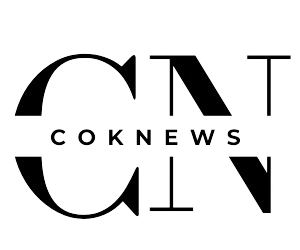Key Takeaways
- CLM platforms facilitate real-time collaboration and version control.
- Digital PO platforms automate procurement processes and tracking.
- PDF conversion tools enhance data export and procurement analysis.
Considering the current digital-driven business environment, it is a complex task to have vendor contracts and purchase orders in place. Ensuring up-to-date documents and coordinating approval processes can create bottlenecks. These challenges may slow down procurement and increase errors. Digital tools dedicated to contract and purchase order management streamline these workflows. This allows organizations to organize and process documents faster.
Understanding Vendor Contract and Purchase Order Management

Definition and Importance: Vendor contract management and purchase order management are part of any procurement process in an organization. It involves preparing, reviewing, and managing agreements with suppliers. In these agreements, terms of service, pricing, and delivery expectations are defined. Proper management ensures that all parties clearly understand their obligations. This reduces the likelihood of misunderstandings or disputes that could disrupt operations.
Then comes purchase order management, an overarching umbrella comprising creation, approvals, and tracking POs. A purchase order (PO) is a letter of approval sent by the client to suppliers. It specifies the goods or services to be procured, along with expected quantities and prices. The PO also defines any delivery deadlines.
When a company manages POs effectively, it can control spending and track placed orders. This practice enables better inventory management and resource utilization. Ultimately, it helps meet financial budgets.
Contract and purchase order management is, without a doubt, essential in maintaining a streamlined supply chain. Moreover, if managed well, these processes can lead to timely delivery, effective cost control, and excellent relationships with suppliers. Consequently, these factors directly impact the overall efficiency and profitability of a company.
Key Challenges
Managing vendor contracts and purchase orders is not an easy task: Regular amendments to contracts create complexities in version management. Without a streamlined digital process, it’s easy to become lost in various versions. This confusion can lead to compliance issues.
Collaboration Gaps: Procurement processes often require collaboration between legal, finance, and operations departments. When proper digital tools are in place, collaboration flows seamlessly. Without these tools, collaboration becomes disjointed, leading to delays in approvals and updates.
Time Delays: Traditional contract and PO management depend largely on manual processes that consume huge amounts of time. As a result, there are considerable delays for a document to reach the signature, approval, or review stages before a purchase can occur. Consequently, these delays significantly impact project timelines.
Manual Data Entry Mistakes: Contract and order entry in manual systems leave great opportunities for mistakes to take place. Slight mistakes in quantity and price can lead to significant losses. Even minor amendments in terms can create confusion between a firm and its suppliers..
Such problems demand strong digital tools to automate, simplify, and centralize contract and purchase order management. This approach enables companies to work more accurately, process tasks on time, and improve interdepartmental communication. Enhanced communication is key to creating a more efficient procurement policy.
Critical Digital Tools for Vendor Contract Management

An efficient vendor contract management process is key to a strong procurement strategy. Contract lifecycle management (CLM) platforms make this process easier. These platforms allow teams to draft, review, and approve contracts in a single digital environment. By centralizing documents, they reduce errors and ensure that stakeholders access the latest version. Real-time collaboration features also simplify communication, letting legal, procurement, and finance teams align on contract terms more easily.
Contract Creation and Collaboration Platforms: A robust CLM platform supports the entire contract lifecycle—from drafting to final approval and secure storage. In a digital space, stakeholders can comment, track changes, and automate approvals, ensuring a smooth, error-free process. These platforms reduce manual steps. They maintain version control and provide standardized information. Additionally, they enhance compliance through a clear audit trail of the contract’s history.
Integrate PDF Tools Naturally: While CLM platforms will manage most of the management process, the specific PDF tools complement the platforms, making contract handling even more efficient.
Example Context: If a contract requires amendments, PDF editing tools allow the team to introduce changes quickly and easily. These tools ensure that the document’s integrity remains intact. This is particularly useful for standardized templates, legal documents, or finalized agreements that need to stay consistent even with minor revisions. PDF editing ensures that any contract modification can be easily completed and shared securely.
Merge and split PDFs: It will greatly help in the management of documents when dealing with contracts that have multiple sections or related agreements with vendors. Splitting PDFs, for instance, will help teams separate key contract sections for easy reference. Additionally, merging PDFs enables teams to compile multiple documents into a single comprehensive file. This capability not only assists in classifying contracts by different vendors, but it also facilitates the aggregation of secondary documents, such as terms and conditions or addenda, into one contract file. Thus, these features significantly streamline the management of contract-related information.
Digital solutions support better contract management with vendors. They help ensure accuracy, consistency, and compliance throughout the contract lifecycle.
Purchase Order Optimization through Digital Solution

Purchase orders need to be efficiently managed for the smooth running of procurement operations and healthy relationships with vendors. Digital purchase order solutions have revolutionized this process by minimizing manual tasks, streamlining approvals, and giving one centralized view of the status of each order. Here’s how certain digital tools help optimize a PO workflow.
Digital Purchase Order Platforms: Digital PO platforms automate each stage of the purchase order cycle, from creation to tracking and fulfillment, significantly reducing repetitive data entry and errors. These platforms enable real-time review, approval, and monitoring, ensuring orders progress smoothly without delays. With automated reminders, team members stay updated on pending actions, making it easier to manage high-volume procurement processes efficiently.
Conversion and Export Tools: Digital PO platforms integrate with PDF conversion tools, allowing direct export of purchase order data into Excel for streamlined analysis and reporting. This is valuable for procurement teams needing insights into spending, budget forecasts, and vendor performance. PDF-to-Excel tools also simplify data sharing among teams, giving stakeholders access to easily analyzable information.
A digital PO platform combined with a PDF conversion tool offers a comprehensive solution for managing purchase orders. This helps businesses boost productivity and gain actionable insights from procurement data.
The Ending Note
Incorporating digital tools into vendor contract and purchase order management streamlines procurement processes. Automating key tasks reduces errors, minimizes delays, and enhances cross-departmental collaboration. These benefits are essential for maintaining smooth operations and strong supplier relationships. Technologies like contract lifecycle management (CLM) platforms and PDF tools support document editing, merging, and data conversion. With these tools, businesses can ensure up-to-date documentation, accurate data handling, and simplified workflows.
Embracing digital solutions helps organizations improve accuracy, meet compliance standards, and make better decisions. This approach supports a more effective and agile procurement strategy.




![Can I Breakdance to Non-Bboy Music? [2025 Updated]](https://coknews.com/wp-content/uploads/2024/11/Can-I-Breakdance-to-Non-Bboy-Music-1068x601.jpg)